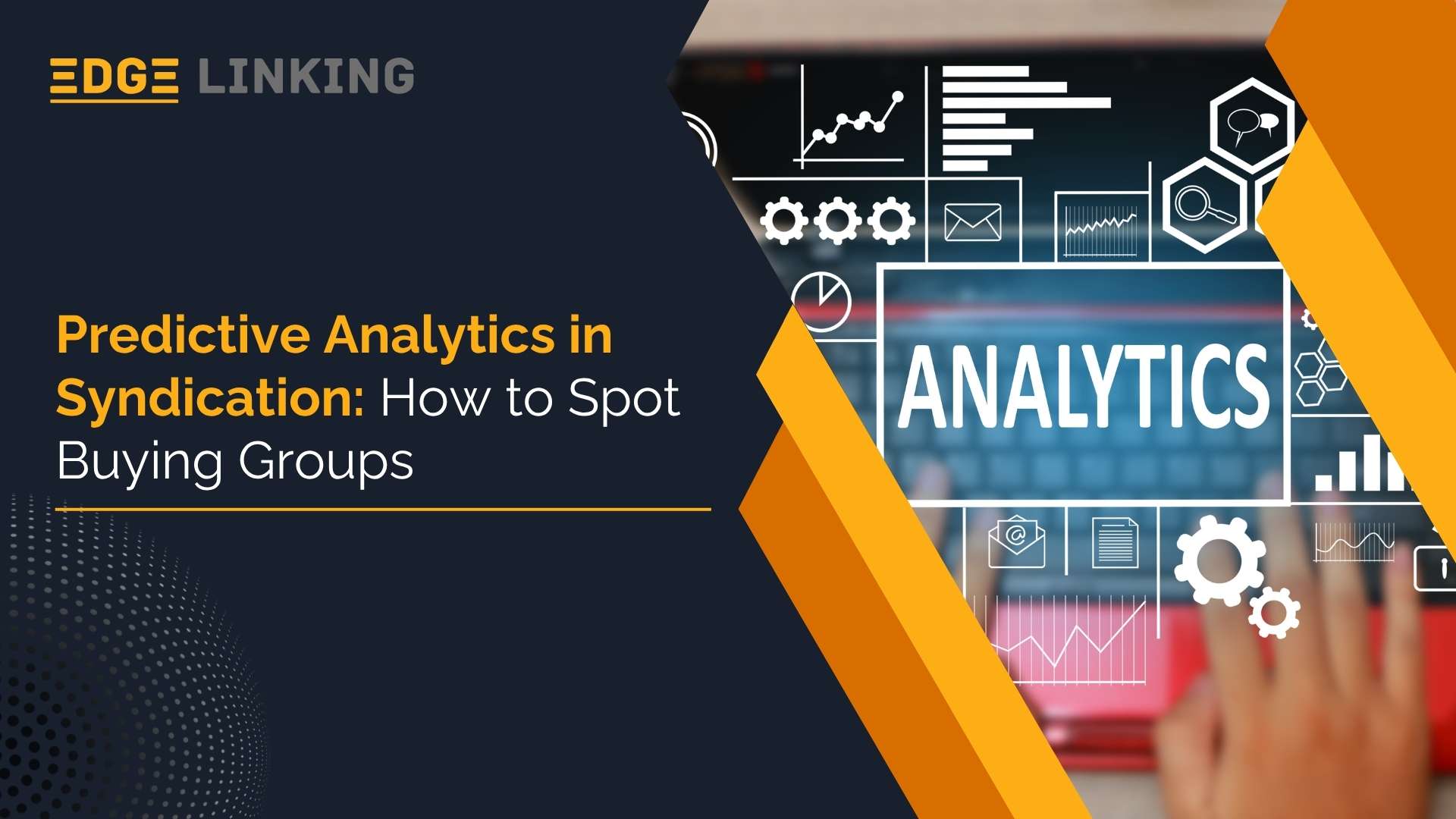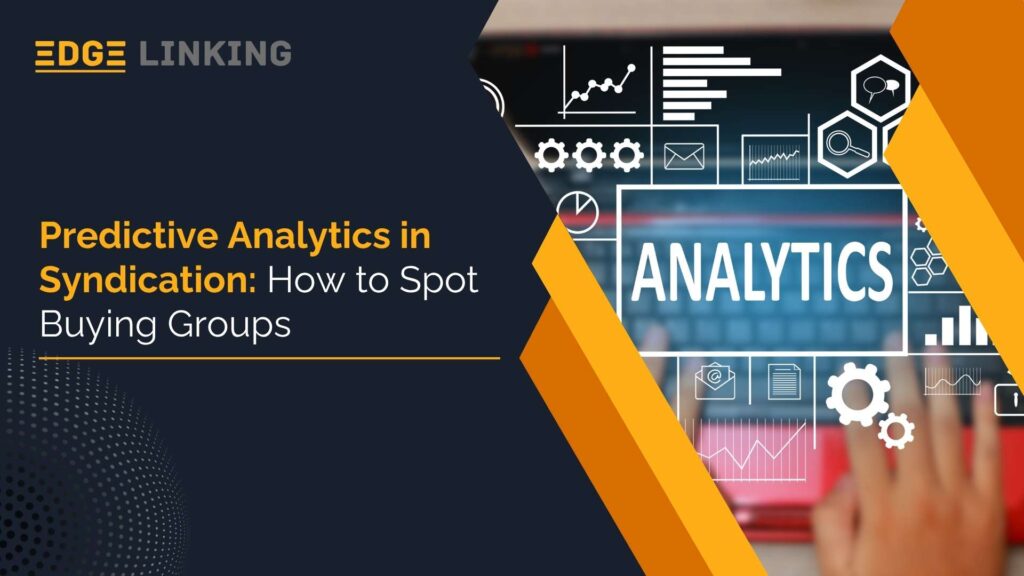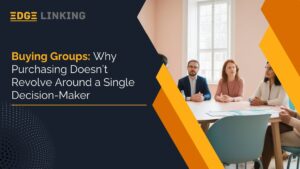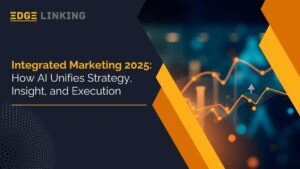A company is launching a new software product. The sales team notices specific clusters of companies making buying decisions together and often buying the same solution. These clusters are known as “buying groups”, and identifying these groups early changes the game.
The buying groups dictate success because their collective decisions impact the market. When you syndicate content to these organizations, it results in faster adoption, larger deal sizes, and cross-selling opportunities. Furthermore, these groups influence other potential buyers, as their endorsement can dictate the market.
This article explains how to implement predictive analytics for spotting buying groups in content syndication.
What is a Buying Group?
A Buying Group is the decision-maker within an organization or across multiple organizations who evaluate, select, and buy products or services. A buying group represents the purchasing decision. Each member plays a unique role in how pain points are identified; solutions are evaluated, and vendors are chosen.
Key Roles in a Buying Group
The following are the different decision-makers in a buying group.
1.The Initiator
The Initiator identifies the opportunity to acquire a new product or solution.
Example: A data analyst notices inefficiencies in reporting and suggests investing in an automated analytics platform.
Why it matters: Understanding the initiator’s motivation helps position your product as an answer to a specific pain point.
2.The Influencer
Influencers shape the evaluation process by providing technical, financial, or operational details. Their input impacts the final decision.
Example: The IT head is evaluating software compatibility, or a compliance officer is ensuring the solution meets regulatory standards.
Market intelligence can help identify these influencers early, allowing sales to engage with content that addresses their priorities.
3.The Decision-Maker
The Decision-Maker holds the authority to approve or reject a buying decision. They often balance business objectives, budget, and ROI.
Example: The CFO deciding whether a proposed marketing automation tool justifies its cost through improved pipeline efficiency.
Recognizing who the Decision-Maker is helps in outreach efforts to focus on measurable returns.
4.The Buyer
The Buyer handles the administrative process such as negotiating contracts, managing procurement, and finalizing agreements.
Example: A procurement manager ensuring vendor compliance and best pricing terms.
Engaging Buyers requires transparency and focuses on long-term value rather than cost.
5.The User
Users are individuals who will use the product or service. Their experience determines satisfaction and renewal opportunities.
Example: Marketing executives use a CRM platform to manage campaigns.
Including the User perspective ensures solution addresses both functionality and user adoption.
6.The Gatekeeper
The Gatekeeper controls access to other members of the buying group. This could be an executive, IT administrator, or even a procurement coordinator.
Example: An IT administrator who screens vendor communications before they reach the CIO.
Identifying Gatekeepers through market intelligence allows vendors to navigate internal barriers.
How Predictive Analytics Identifies Buying Groups
Below are the ways predictive analytics can help identify and understand buying groups.
1.Analyzing Engagement Patterns
Predictive analytics monitors web visits, content downloads, webinar attendance, and email engagement to detect interest within the same company or group of companies.
Example: If employees from finance, operations, and IT start engaging with supply chain analytics content within the same week, predictive models flag it as a potential buying group.
It uses market intelligence to map behavioral signals and anticipate when a group is moving from research to decision-making.
2.Mapping Relationship Networks
Predictive algorithms analyze CRM data, LinkedIn connections, and communication to uncover relationships and influence patterns.
Example: A marketing automation tool identifies that marketing directors across partner organizations often interact and share insights. Predictive analytics identifies them as a buying group likely to adopt a solution.
It helps understand customer segmentation not just by demographics, but by relationship clusters that drive purchasing behavior.
3.Tracking Buying Intent and Timing
By analyzing historical deal cycle and content interactions, predictive models can estimate when a buying group will decide.
Example: A SaaS vendor notices that when product demos, case study views, and pricing page visits peak among a specific cluster of contacts; conversion follows within 30 days. Predictive analytics use this insight to alert sales to outreach.
4.Scoring and Prioritizing Buying Group Members
Not all members in a buying group hold equal influence. Predictive analytics assign influence scores based on behavior, designation, and interaction frequency.
Example: Within a buying group researching cybersecurity solutions, the CISO and IT Director receive higher influence scores compared to a project analyst.
Sales can focus their outreach on decision-makers and influencers rather than spreading efforts across multiple targets.
5.Integrating Customer Segmentation with Predictive Insights
Combining customer segmentation (industry, company size, buying stage) with predictive analytics allows for more precise targeting.
Example: Predictive models reveal that financial firms with compliance demands and strong engagement patterns form buying groups faster than small startups.
These insights help tailor content syndication strategies to potential segments, improving ROI.
Benefits of Implementing Predictive Analytics in Spotting Buying Groups
Below are the key benefits of implementing predictive analytics for spotting buying groups.
1.Early Identification of Buying Intent
Predictive analytics detects behavioral signals that indicate a group is beginning to research solutions.
Example: When multiple employees from the same company start engaging with a whitepaper about cloud migration, predictive models can flag them as a potential buying group.
Early awareness enables teams to start personalized engagement before competitors.
2.Enhanced Customer Segmentation
Predictive analytics adds behavioral and intent-based segmentation, revealing which clusters of account are most likely to buy.
Example: A technology vendor learns that retail companies showing spikes in security tool searches often form buying groups.
The customer segmentation ensures marketing and sales resources focus on the highest-probability opportunities.
3.Higher Conversion Rates and Deal Sizes
Engaging entire buying groups instead of individual contacts speeds up decision-making. Predictive analytics identifies key influencers, ensuring every critical stakeholder is addressed.
Example: A software provider targeting a manufacturing enterprise tailor its messaging for the CFO, CIO, and operations head, focusing on ROI, scalability, and efficiency.
4.Data-Driven Forecasting and Planning
Predictive models not only spot buying groups but also forecast deal potential and timing. With market intelligence, you can anticipate revenue opportunities, optimize campaign timing, and allocate resources.
Conclusion
Success in syndication is no longer about reaching more leads; it’s about reaching the right buying group at the right time. Predictive analytics in syndication marks an evolution toward intelligent decision-making. It cultivates influence within buying groups, transforming how relationships are built and sustained.
Leverage your market intelligence, refine your customer segmentation, and start identifying the buying groups shaping tomorrow’s opportunities.






